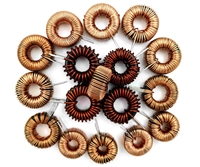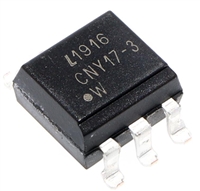| 是否无铅: | 含铅 | 是否Rohs认证: | 不符合 |
| 生命周期: | Active | 零件包装代码: | SOIC |
| 包装说明: | SOP, | 针数: | 16 |
| Reach Compliance Code: | unknown | 风险等级: | 5.72 |
| 模拟集成电路 - 其他类型: | BATTERY CHARGE CONTROLLER | 控制模式: | CURRENT/VOLTAGE-MODE |
| 控制技术: | PULSE WIDTH MODULATION | 最大输入电压: | 20 V |
| 最小输入电压: | 4.1 V | 标称输入电压: | 10 V |
| JESD-30 代码: | R-PDSO-G16 | JESD-609代码: | e0 |
| 长度: | 9.9 mm | 湿度敏感等级: | NOT SPECIFIED |
| 功能数量: | 1 | 端子数量: | 16 |
| 最高工作温度: | 85 °C | 最低工作温度: | -40 °C |
| 标称输出电压: | 3.3 V | 封装主体材料: | PLASTIC/EPOXY |
| 封装代码: | SOP | 封装形状: | RECTANGULAR |
| 封装形式: | SMALL OUTLINE | 峰值回流温度(摄氏度): | 220 |
| 认证状态: | COMMERCIAL | 座面最大高度: | 1.75 mm |
| 表面贴装: | YES | 切换器配置: | SINGLE |
| 最大切换频率: | 250 kHz | 温度等级: | INDUSTRIAL |
| 端子面层: | TIN LEAD | 端子形式: | GULL WING |
| 端子节距: | 1.27 mm | 端子位置: | DUAL |
| 处于峰值回流温度下的最长时间: | 30 | 宽度: | 3.9 mm |
| Base Number Matches: | 1 |
| 型号 | 品牌 | 获取价格 | 描述 | 数据表 |
| ADP3801AR-REEL | ROCHESTER |
获取价格 |
BATTERY CHARGE CONTROLLER, 250 kHz SWITCHING FREQ-MAX, PDSO16, SOIC-16 |

|
| ADP3802 | ADI |
获取价格 |
High Frequency Switch Mode Dual Li-Ion Battery Chargers |

|
| ADP3802_15 | ADI |
获取价格 |
High Frequency Switch Mode Dual Li-Ion Battery Chargers |

|
| ADP3802AR | ADI |
获取价格 |
High Frequency Switch Mode Dual Li-Ion Battery Chargers |

|
| ADP3802AR | ROCHESTER |
获取价格 |
2-CHANNEL POWER SUPPLY SUPPORT CKT, PDSO16, SOIC-16 |

|
| ADP3804 | ADI |
获取价格 |
High Frequency Switch Mode Li-Ion Battery Charger |

|
| ADP3804JRU | ADI |
获取价格 |
High Frequency Switch Mode Li-Ion Battery Charger |

|
| ADP3804JRU-12.5-R7 | ADI |
获取价格 |
IC BATTERY CHARGE CONTROLLER, PDSO24, TSSOP-24, Switching Regulator or Controller |

|
| ADP3804JRU-12.5-RL | ADI |
获取价格 |
IC BATTERY CHARGE CONTROLLER, PDSO24, TSSOP-24, Switching Regulator or Controller |

|
| ADP3804JRU-125 | ADI |
获取价格 |
High Frequency Switch Mode Li-Ion Battery Charger |

|
 压敏电阻器在直流电路中的过压保护应用探讨
压敏电阻器在直流电路中的过压保护应用探讨

 电感耐压值及其与电感大小的关系
电感耐压值及其与电感大小的关系

 CNY17F光耦合器:特性、应用、封装、引脚功能及替换型号解析
CNY17F光耦合器:特性、应用、封装、引脚功能及替换型号解析

 DS1307资料解析:特性、引脚说明、替代推荐
DS1307资料解析:特性、引脚说明、替代推荐
